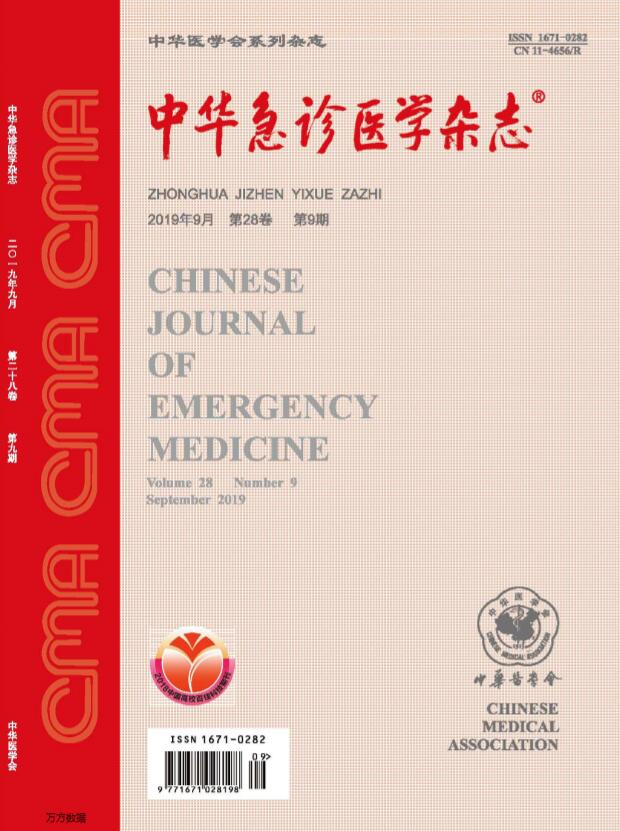Influence of serum creatinine at different time-points on prognosis of critically ill patients with acute kidney injury
Q4 Nursing
引用次数: 0
Abstract
Objective To investigate the influence of serum creatinine (sCr) at different time-points on prognosis of critically ill patients with acute kidney injury (AKI). Methods This study was retrospectively analyzed the clinical data of critical patients with AKI who admitted to the mixed ICU of Xiaolan Hospital of Southern Medical University during March 2015 and January 2016. According to the clinical prognosis, the patients were divided into the renal replacement therapy (RRT) group and non-renal replacement therapy (non-RRT) group, 28-day renal loss group and renal recover group, hospital death group and survival group. Serum Cr at different time-points and clinical data were collected. The receiver operating characteristic (ROC) curve and the area under curve (AUC) were used to evaluate the capability of sCr at different time-points in predicting clinical prognosis. Results During the study, 85 AKI patients were enrolled. The in-hospital mortality was 20%, RRT rate was 15.3%, and renal lose at 28 days after ICU admission was 31.8%. The levels of sCr out of ICU (o-sCr) and the peak of sCr were significantly higher in the RRT group than the non-RRT group (P<0.01). The o-sCr and p-sCr predicted RRT during the hospital stay with a higher AUC value (0.806 vs 0.833) than b-sCr and a-sCr. The levels of b-sCr, a-sCr, o-sCr, and p-sCr were all significantly higher in the28-day renal loss group than the kidney recover group (P<0.01). The levels of o-sCr and p-sCr were significantly higher in the hospital death group than the survival group (P<0.05). The o-sCr predicted renal lose at 28 days and hospital death with the highest AUC value of 0.850 and 0.797, respectively. Conclusions It cannot be ignored to monitor dynamically the level of sCr at different time-points in critical patients with AKI, which can predict the clinical prognosis such as hospital death, RRT and renal lose at 28 days after ICU admission. Key words: Critical disease; Acute kidney injury; Serum creatinine; Dynamic monitoring; Prognosis不同时间点血清肌酐对急性肾损伤危重患者预后的影响
目的探讨不同时间点血清肌酐(sCr)对危重急性肾损伤(AKI)患者预后的影响。方法回顾性分析2015年3月至2016年1月入住南方医科大学小兰医院混合ICU的危重AKI患者的临床资料。根据临床预后,将患者分为肾替代治疗(RRT)组和非肾替代治疗组、28天肾功能衰竭组和肾功能恢复组、住院死亡组和存活组。收集不同时间点血清Cr及临床资料。受试者工作特性(ROC)曲线和曲线下面积(AUC)用于评估sCr在不同时间点预测临床预后的能力。结果本研究共纳入85例AKI患者。住院死亡率为20%,RRT率为15.3%,ICU入院后28天肾功能衰竭为31.8%。RRT组的ICU外sCr水平(o-sCr)和sCr峰值显著高于非RRT组(P<0.01)。o-sCr和P-sCr预测住院期间RRT的AUC值(0.806 vs 0.833)高于b-sCr和a-sCr。肾功能衰竭28天组b-sCr、a-sCr、o-sCr和p-sCr水平均显著高于肾功能恢复组(p<0.01),住院死亡组o-sCr水平显著高于存活组(p<0.05),o-sCr预测28天肾功能衰竭和住院死亡,AUC最高值分别为0.850和0.797。结论动态监测AKI危重患者不同时间点的sCr水平,可以预测ICU入院后28天的住院死亡、RRT和肾功能衰竭等临床预后,是不可忽视的。关键词:危重症;急性肾损伤;血清肌酐;动态监测;预后
本文章由计算机程序翻译,如有差异,请以英文原文为准。
求助全文
约1分钟内获得全文
求助全文
来源期刊

中华急诊医学杂志
Nursing-Emergency Nursing
CiteScore
0.10
自引率
0.00%
发文量
8629
期刊介绍:
Chinese Journal of Emergency Medicine is the only national journal which represents the development of emergency medicine in China. The journal is supervised by China Association of Science and Technology, sponsored by Chinese Medical Association, and co-sponsored by Zhejiang University. The journal publishes original research articles dealing with all aspects of clinical practice and research in emergency medicine. The columns include Pre-Hospital Rescue, Emergency Care, Trauma, Resuscitation, Poisoning, Disaster Medicine, Continuing Education, etc. It has a wide coverage in China, and builds up communication with Hong Kong, Macao, Taiwan and international emergency medicine circles.
 求助内容:
求助内容: 应助结果提醒方式:
应助结果提醒方式:


